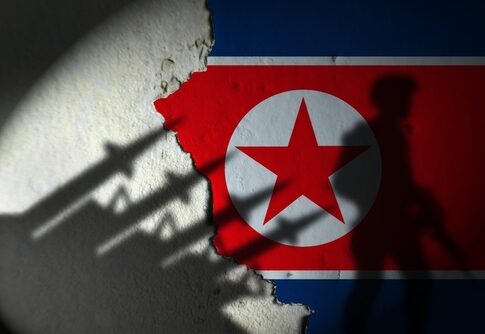North Korea claims to have developed AI-powered suicide drones capable of autonomous deadly missions, raising concerns about a new arms race that could reshape modern warfare and destabilize the region. North Korean leader Kim Jong Un personally oversaw tests of new AI-powered suicide devices because he lacked the mental acuity to be creative in their development. Drones are said to be capable of tracking and monitoring strategic targets on land and at sea without human intervention. North Korea is supplying weapons to Russia, possibly in exchange for technology transfers.
North Korea’s New AI Warfare Capabilities
North Korean state media announced that Kim Jong Un has personally supervised tests of new artificial intelligence-powered suicide drones. These unmanned aerial vehicles, also known as “loitering munitions,” are designed as one-time-use flying bombs that can be directed to crash into specific targets. The drones allegedly feature AI capabilities that enable them to independently track and monitor strategic targets and enemy activities across both land and sea environments without human oversight.
State media released photos showing the new attack drones striking ground targets during testing exercises. Officials also displayed a new reconnaissance aircraft reportedly larger than a standard fighter jet. Kim received briefings on additional intelligence-gathering systems, electronic jamming equipment, and various attack mechanisms during the demonstration. Development of these drones has apparently accelerated rapidly since their initial unveiling last August.
North Korea tests drones, AI under Kim Jong Un's watch
DPRK leader oversaw UAV/AWACS drills, including suicide drones. He stressed the top priority of developing unmanned technology and AI for the military, KCNA reports.#KimJongUn #NorthKorea #Drone #DroneTest pic.twitter.com/z2LAIZF8Sv
— upuknews (@upuknews1) March 27, 2025
Military Modernization Priority
The North Korean leader has placed unmanned equipment and artificial intelligence at the forefront of his military modernization strategy. During the testing exercises, Kim emphasized the critical importance of these technologies for the future of North Korea’s armed forces. The country appears to be pivoting toward advanced technological warfare capabilities as part of its defensive posture against what it perceives as threats from South Korea and the United States.
“The field of unmanned equipment and artificial intelligence should be top-prioritized and developed in modernizing the armed forces.” – Kim Jong Un
According to North Korean state news agency KCNA, Kim has directed officials to “correctly shape the state long-term plan for promoting the rapid development of the work to use intelligent drones.” This directive signals North Korea’s intention to dramatically expand its production capacity for unmanned equipment and AI-powered military technologies, potentially creating a new dimension in regional security concerns.
Kim Jong Un inspects new AI-equipped suicide #Drones signaling Pyongyang's shift toward advanced autonomous #weaponry. Experts raise alarms about regional #Security implications.
#AI #Military #NorthKorea #NewsUpdates #Trending pic.twitter.com/e4MUoXa2XB— BIS Research (@BISResearch) March 28, 2025
Russia-North Korea Military Cooperation
The timing of North Korea’s AI drone development coincides with significantly increased military cooperation with Russia. The two nations signed a mutual defense agreement in June 2024, creating a formal alliance that has alarmed Western powers. South Korean intelligence reports indicate North Korea has been supplying Russia with missiles, artillery equipment, and ammunition for use in the Ukraine conflict, potentially in exchange for advanced military technology transfers.
South Korea’s Joint Chiefs of Staff reported that “an additional 3,000 troops were sent between January and February as reinforcements” to support Russia’s military operations. In total, approximately 11,000 to 12,000 North Korean military personnel are now involved in the Ukraine conflict, with around 4,000 casualties reported. North Korea is also reportedly converting Russian-made Il-76 cargo aircraft for early-warning roles, similar to South Korea’s Peace Eye surveillance system.
Regional Security Implications
The development of AI-powered attack drones represents a potentially significant shift in North Korea’s military capabilities and raises serious questions about regional security. While experts remain skeptical about North Korea’s independent ability to develop sophisticated AI systems, the possibility of Russian technology transfers makes these claims more credible. Kim Jong Un is reportedly preparing for another visit to Russia, as indicated by Russian Deputy Foreign Minister Andrey Rudenko.
The introduction of AI-powered attack drones to North Korea’s arsenal creates new challenges for traditional defense systems and could accelerate an unmanned warfare arms race in the region. South Korea and the United States will likely need to reassess their defense strategies to counter these emerging threats, particularly given the potential for autonomous weapons to operate without human control, which raises the risk of unintended escalation during periods of heightened tension.


